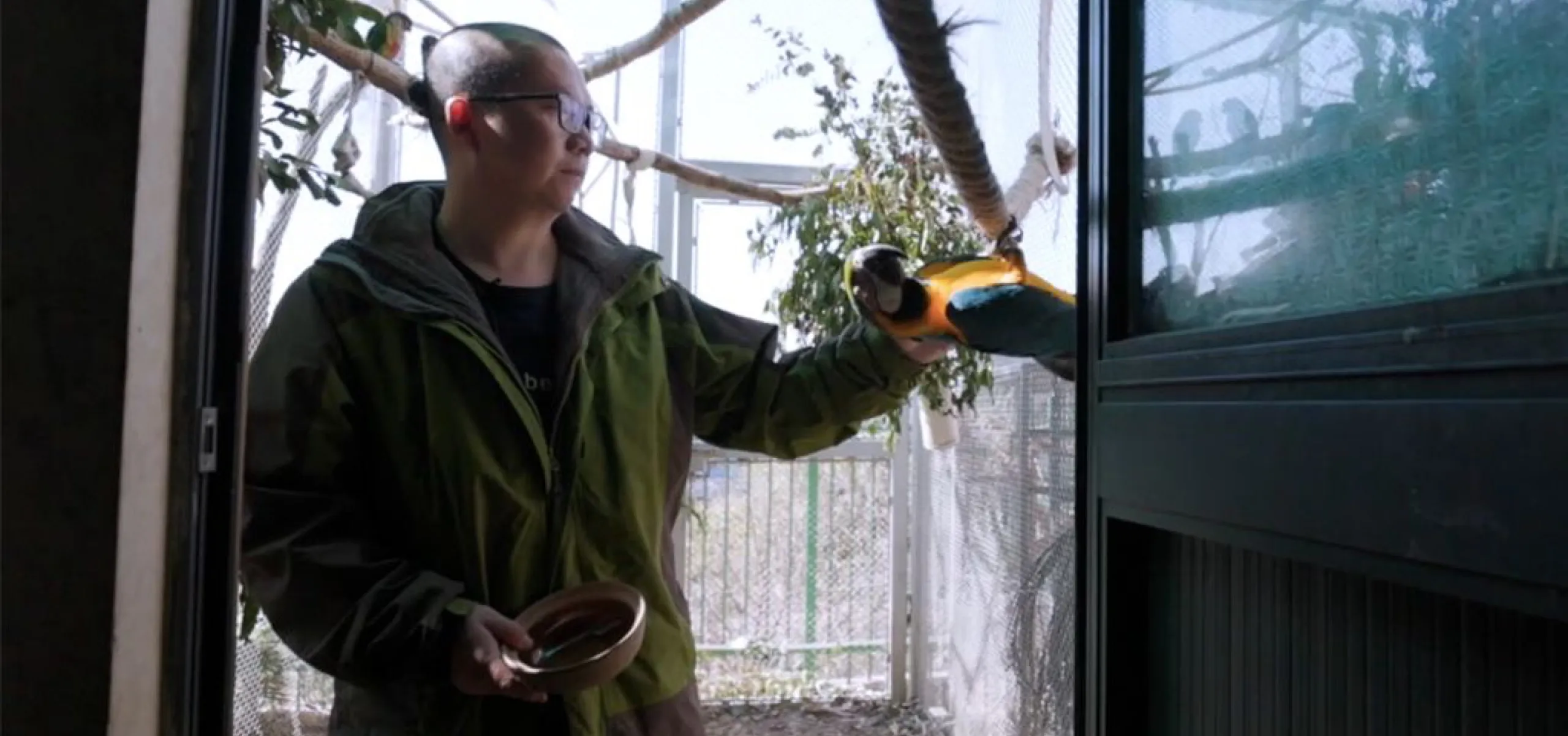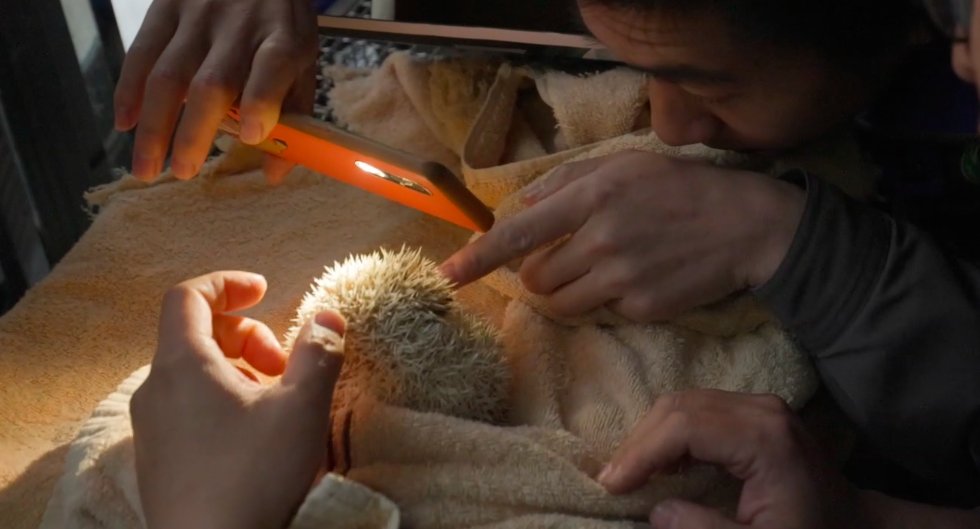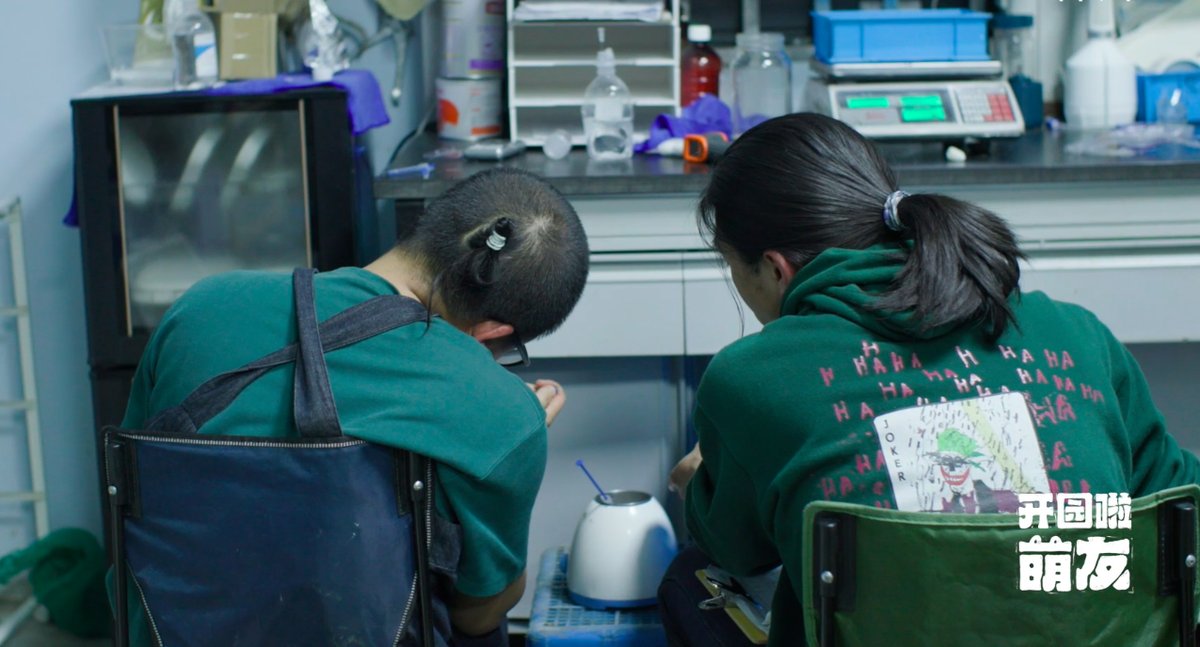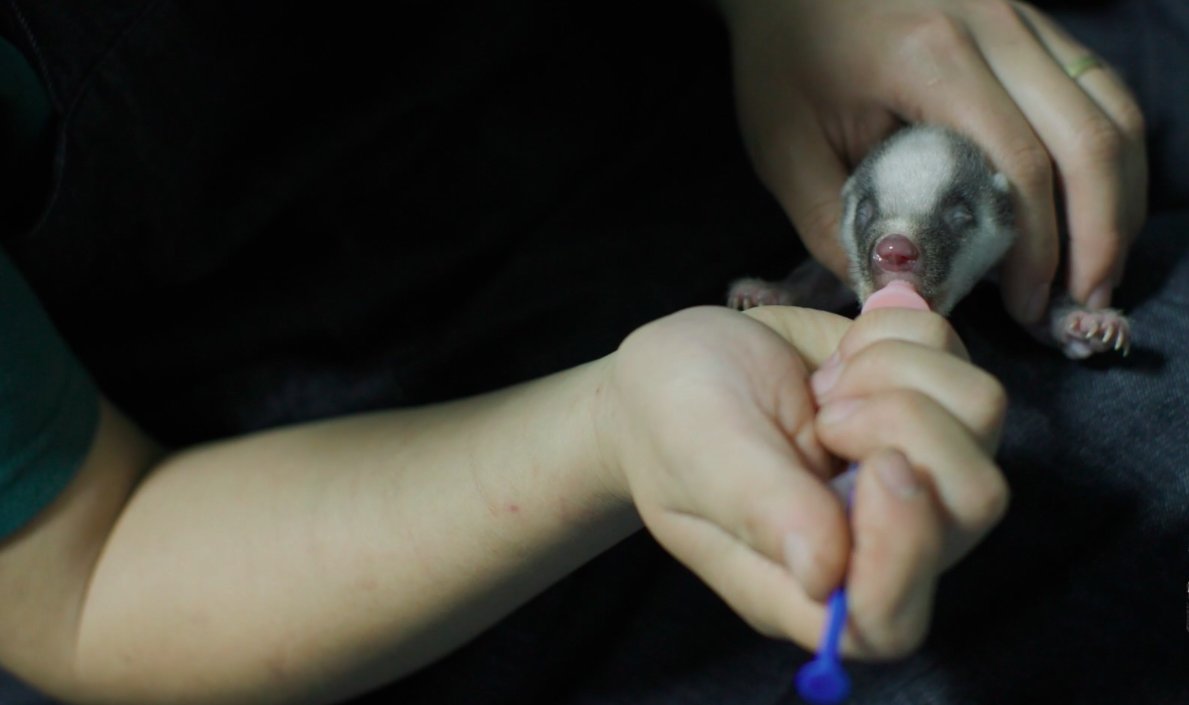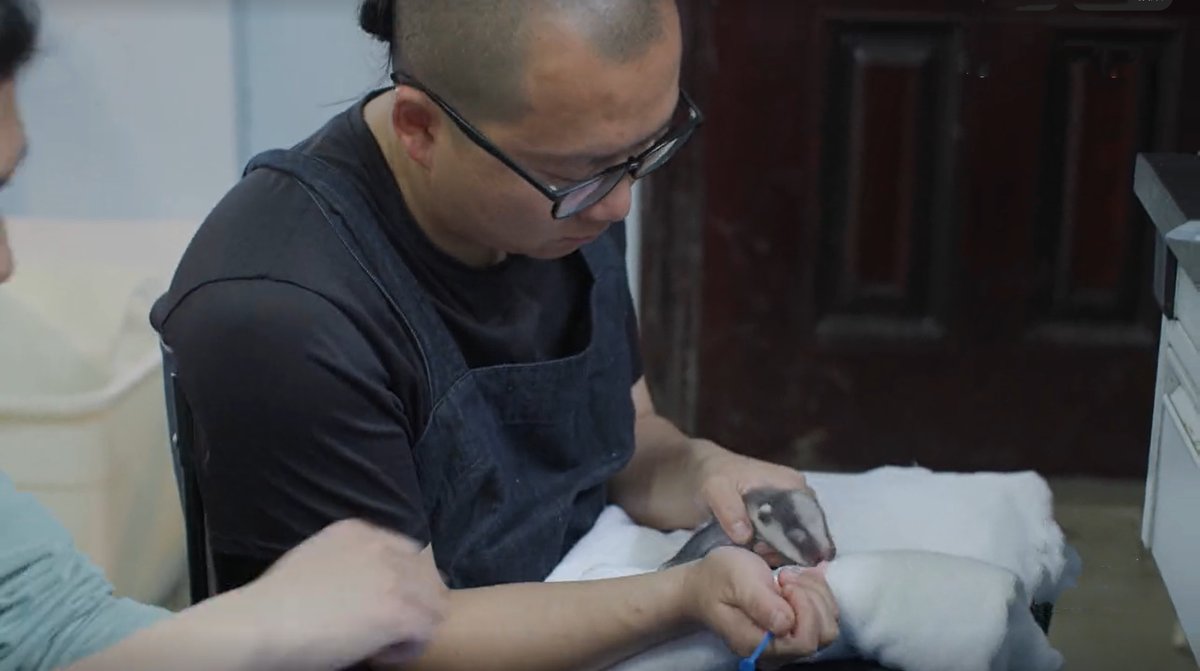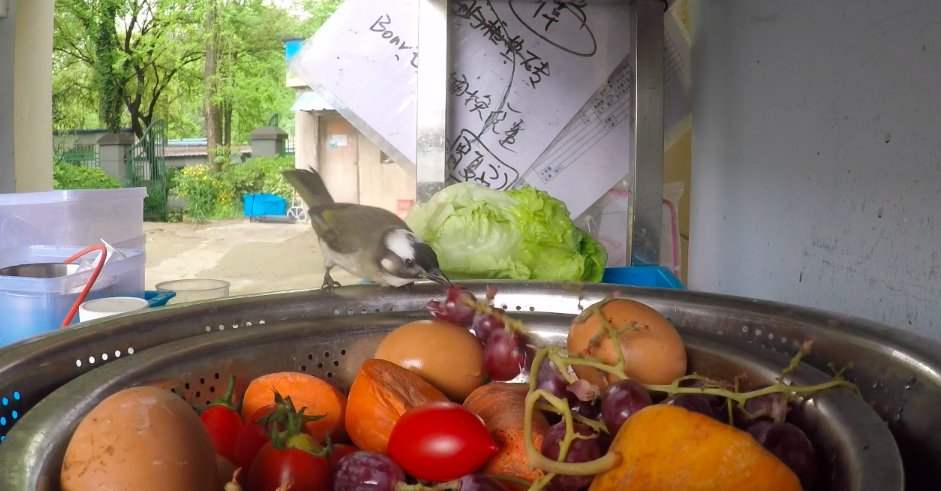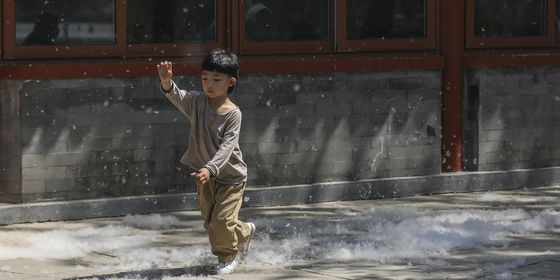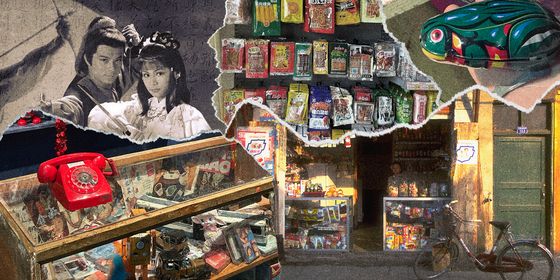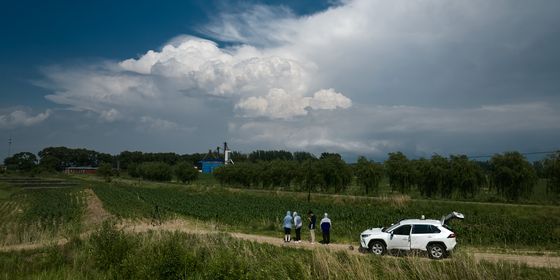From observing giant pandas in the high-altitude forests of Sichuan to raising baby badgers in Nanjing city—what’s it like working to protect wildlife in China?
Many of us have taken an interest in animals as children or tried raising them at home: if not chicks, ducklings, kittens, or puppies, then it might’ve been goldfish or tadpoles.
Today’s narrator is Chen Yuelong, who was born in the 1980s and grew up in Beijing. He has had a lifelong obsession with animals. When other children were going through the familiar motions of catching tadpoles and petting dogs, the young Chen was already camped out in bookstores engrossed in The Complete Guide to Caged Poultry and Tortoise and Turtle Care.
He kept whatever species he could in a city apartment, and outside of school, he could occupy himself for hours at parks, live markets, and zoos, developing a keen eye for observing animal behavior. As an adult, Chen’s job fulfills precisely many of our childhood dreams: He is an animal rescue worker at the Hongshan Zoo in Nanjing.
-1-
What does a hippo’s tail look like?
I grew up in Beijing, near Taoranting Park. When I was little, I would go for walks in the park, where I encountered many kinds of animals. There were tadpoles, lizards, kingfishers, as well as some bizarre-looking birds, like the hoopoe with its long, thin beak and large crest—quite pretty, actually.
I remember one time I went to the Beijing Zoo to see the hippos, but they stayed submerged in the water the whole time and wouldn’t come out. I had a sudden thought: What did the hippo’s tail look like? So I ended up waiting and waiting by the hippo exhibit, just to catch a glimpse of their tails.
At last, after four long hours, a hippo came out of the water. I saw its tail: It was wrinkly, with a bit of hair on it. I can’t picture the scene very well anymore, but I remember clearly the fact that I waited so long at the zoo just to see a hippo’s tail.
I studied biotech in college, in part because I couldn’t test into other departments. I settled by picking something that sounded somewhat animal-related.
But I regretted this as soon as I started college, because that field was primarily concerned with the microscopic world—there’s actually no contact with animals at all. During that period, my only consolation was volunteering at the Beijing Zoo.
After graduating from college, I started at a biotech company, researching antibodies—something I had absolutely no interest in. Work was torture for me: as soon as the day started, I was already looking forward to it ending. Whenever I had a spare moment, I would go on my phone and watch videos about animal care.
I stayed at that company for not quite six months before I quit. I felt I had to go work with animals, do something I actually liked. Then someone told me, “There’s a wildlife rescue center you can work at,” so I went.
That job wasn’t as you might imagine, with tons of applicants competing for the position. In reality, there weren’t all that many people who wanted to do the work. The person who recruited me told me the pay wasn’t so great, but I was still pretty set on it. I simply felt I was meant to do this kind of thing.
At the time I was 23. It wasn’t so important how much I made—pursuing my dreams was the more important thing.
-2-
Tracking pandas in the Baishuihe Conservation District
At the Beijing Wildlife Rescue Center, Chen’s primary role was that of a reptile keeper. Most of the animals he cared for were protected species confiscated from owners who’d bought them illegally.
As he gained a deeper understanding of wild animals, Chen realized that he wanted more from his job. So after working at the rescue center for five years, he made a switch to work with the Chinese Felid Conservation Alliance.
The CFCA is a nonprofit that focuses on protecting China’s wild felids, in particular tigers, leopards, Asiatic golden cats, Eurasian lynxes, Pallas’s cats, leopard cats, and other native felids. As part of this organization, Chen took on more fieldwork. His first trip with his colleagues was to the Baishuihe Conservation District in Sichuan province, where they were searching for indicators of wild pandas in the area.
I used to not understand why everyone liked pandas so much—I thought they only got so much attention because they were cute. But that first trip with the CFCA totally altered my perspective.
At the time we were planning to go to the Baishuihe Conservation District near Chengdu. Our objective was capturing images of pandas using wildlife cameras. The conservation district used to have a panda population, but since the Sichuan Earthquake in 2008, it had been many years since the last panda sighting.
In order to accomplish this, we needed to get ourselves to the places that pandas used to frequent, including a remote trail. Carrying our sleeping bags, we trekked through the mountains for three days before arriving at our destination.
Chengdu is situated in the middle of the Sichuan basin. The basin is surrounded on all sides by jagged mountains with peaks that pierce the sky. The farther out you go, the more arduous the terrain. Shortly after driving up to the conservation district, as we were looking up from beneath the mountains, our colleague said, “Not even monkeys can climb up there.”
The route was very challenging, given the year-round precipitation in Sichuan, plus the thick cover of bamboo and the unpredictable weather patterns. It was crucial to choose the right path, get out of there in one piece.
Our first day, we set out in the morning and climbed until 3 or 4 in the afternoon, when we started to set up camp. Upon pitching my tent, I unrolled my sleeping bag and fell asleep as soon as my head hit the ground. The rest of the team was still busy making a fire, but I was already dead to the world, only noticing that the fire’s heat made it nice and cozy.
Someone took a photo of me. When I saw it later, I reckoned that when I died I was going to look just like that photo.
After that field survey, I gained a deep reverence for the panda species. It turns out that pandas aren’t the way they appear in zoos. Instead, they can live comfortably in those horrific conditions, where I thought I was going to keel over and die. They are truly mystical, have an amazing capacity for survival.
The camera that we set up back then—after three full days of trekking—has been doing its job this whole time. Although we didn’t capture any panda pictures the first year, we did succeed in the second year. That was the first time in the 10 years since the Sichuan Earthquake that pandas had been seen in the Baishuihe Conservation District.
-3-
Human-animal interactions
I stayed at the CFCA for three years, which were of great significance to me. In the past, when I worked in wildlife rescue, my work was only concerned with specific injuries. But with the CFCA, I had the opportunity to visit the animals’ habitats and see where they lived. There I could observe their modes of survival and come to understand the risks that threaten the whole population.
An important protected species for the CFCA is the North-Chinese leopard, whose range is primarily in Shanxiprovince. I lived there for a bit over a year.
I felt that humans and animals had a very harmonious relationship there. People would be working in the fields near the edge of the village, by a stream, when a roe deer would come down from the slopes above the opposite bank to drink. When the locals looked up and saw the deer, they just kept right on working.
The local diet is mainly potatoes, tomatoes, cabbage—they very seldom eat meat, and if they come across a deer at the edge of the village they don’t think of shooting it and bringing it home to eat.
When we were in the field in Anhui, the guesthouse owner became quite excited after hearing that we were going out at night to look for wildlife. The locals there like to go for a casual jaunt at night, looking to bring some game home. If they don’t manage to bring back any game, it’s a major loss to them.
It was after many research trips that I finally understood: urbanization, highway construction, and human-animal interactions all have the potential to harm wildlife. I realized it was urgent to protect wildlife. Even now, at my zoo, we feel that the mission of modern zoos shouldn’t be entertainment, but rather providing services that support wildlife conservation.
-4-
The wild boars of Purple Mountain
In 2019, Chen started working at the Hongshan Zoo’s wildlife rescue center in Nanjing. The rescue center serves both Jiangsu Province and the city of Nanjing, maintaining populations of around 70 to 80 species and 600 to 700 individuals.
Some of the rescued animals come from abroad, primarily through illegal wildlife trafficking. These include reptiles such as snakes, as well as parrots and other birds. Because they can disrupt the local ecosystem, many of these species cannot be returned to the wild, and must instead be housed within the sanctuary.
Another portion of the rescued animals come from within China. These animals are typically found injured in cities or on the outskirts. It may be difficult for city-dwellers to imagine this, but many wild animals live right alongside us in populated areas.
For example, one of our correspondents once saw a Siberian weasel on the Third Ring Road in Beijing at around three in the morning; our producer Liu Dou bumped into a hedgehog during a nighttime dog walk in the park. According to Chen, in Beijing 50 years ago it was even possible to come across leopard cats in Sanlitun.
Due to the Nanjing’s geography and planning policies, you can encounter medium-sized or larger species within city limits. These include water deer, badgers, ferret-badgers, and the renowned Nanjing wild boar.
Nanjing has kept Purple Mountain intact within the city center. With this, and the Zhongshan Scenic Area, the city has preserved a significant portion of its nature, and the government has kept urbanization at a lower level. Naturally, this means that wild animals have been able to maintain a presence in the area. I saw water deer and wild boars the first time I ever visited Purple Mountain.
By comparison, it is very rare to come across wild animals on the streets of Beijing. While Beijing actually has extensive mountain districts, those districts are all on the outskirts, so their wildness doesn’t impact the city center.
Nanjing is a different story: the wild boars on Purple Mountain roam freely. Before you know it, they’re in subway stations, on the streets, in schoolyards.
-5-
When do wild animals need rescuing?
Even though city residents may encounter a number of wild animals, not all of the creatures that appear in cities or surrounding areas need rescuing. Determining which ones need rescue, and which ones don’t, is something that requires some background knowledge.
In particular, we tend to receive many requests for bird rescue during April and May. In spring, after baby birds hatch, their bodies are covered in down; their flight feathers and tail feathers come in gradually. Sometimes, when a young bird is hungry, it might hop out of the nest onto a nearby branch. But during that period, their tail feathers have not developed fully and their flight capacity is limited—one wrong move, and they might end up falling from the tree.
Every year, many of these just-fledged birds fall out of trees. Since they can’t fly very far, it is very difficult for them to fly back up to their nests. The mother bird can’t help them either—she can only wait anxiously in the treetops. This is when human assistance is required to bring the fledgling birds back up into the canopy.
If at this point, a passerby brings a young bird to the rescue center, we can typically feed and rear it. But during this process, these fledgling birds lose out on opportunities to learn survival skills among their peers. This includes learning how to identify predators, how to socialize—these essential survival skills are very difficult for us humans to teach.
The best we can do is put birds of various ages from the same species together, and let them interact. Because only an owl can teach an owl how to truly be an owl. If it only comes into contact with me, then it can only deduce that it is human, or humans are it.
Then there are animals like hedgehogs, which people also frequently bring in. For example, someone might be out for an evening walk in their neighborhood and come across a hedgehog lying motionless in the road. They might think, “There must be something wrong with it,” and bring it to the rescue center. After we examine it, it might turn out there’s nothing wrong with it; the vital signs are normal, and it didn’t need to be rescued at all.
Hedgehogs are like this: They can’t run very fast, and their most important defense is their coat of prickles. When they encounter a threat, their tactic is to freeze up and ready their spines. So when a hedgehog is lying motionless on the road, there isn’t necessarily anything wrong with it.
It is also common for young herbivores to be mistakenly rescued. Although they can stand and run as soon as they’re born, their running capacity hasn’t fully developed. So the mother will often leave her young to lie still in thick underbrush while she forages, coming back later to nurse them. If you see a young roe deer or water deer lying motionless in a thicket, the proper course of action is to leave right away, and don’t mess with it.
For many young animals, which cannot run very fast, their normal reaction to danger is to freeze so it’s hard for you to see them. If you happen to spot them, it’s best to pretend you didn’t.
-6-
A wet nurse to baby animals
We urge city residents to avoid bringing young animals in for unneeded rescue. For one, this is to avoid separating animals from their kin; for another, this is because it is an enormous challenge for humans to raise a young animal to maturity.
Rearing young animals is the most grueling part of Chen’s job. They are small and delicate. Not only do they need—like human babies—to be fed at precise intervals around the clock, but they also lack the support system provided by pediatricians and parenting manuals. Everything depends on the rescue worker’s own observations and judgments.
Most recently, Chen has been raising a few baby badgers.
Even at 11 p.m., I need to go give milk to the badgers. By now the number of meals they require each day has dropped to four, from seven. In the beginning, I only slept two or three hours each night. I have to stick it out until after they are weaned and I am finally free.
Raising young animals from the wild is actually incredibly difficult, because we don’t have a complete understanding of the process. Often, everything depends on the animal-care worker’s own knowledge. I often read up about European badgers and adapt those resources to our circumstances.
Rearing wild animals is not at all what people imagine—“How do we help them grow up healthy and happy?”—but rather, “How do we keep them from dying?” The latter is the actual standard for raising animals from the wild. As long as they don’t die, then they have the opportunity to grow up. Throughout the process there will always be some fumbles, so raising any animal to maturity can be considered a victory.
Last year, we rescued a Siberian weasel; it was our first time working with this species, so we didn’t have much experience. This was how we accidentally discovered that young Siberian weasels can eat meat before their eyes have even opened—truly a marvel.
Later on we had a ferret-badger rescue. It didn’t do well with formula, so since it’s also a mustelid, I thought we might be able to feed it the same way we did the baby weasel. The ferret-badger was a bit larger; its teeth had come in, and it was in somewhat better condition. But it ended up dying.
Even though they are both mustelids, the differences were huge in practice. That experience made me realize that our understanding of animals is incredibly inadequate—it’s due to this that we run into so many issues in our theory and methodology.
-7-
Returning animals to the wild
Unlike your typical animal husbandry or zookeeping, the purpose of native wildlife rescue is to eventually return the animals to the wild. We make every effort to accomplish this goal: hiding food under rocks and fallen leaves to simulate a natural environment, or doing our best to maintain some distance from the animals and prevent them from bonding with humans.
I am often asked whether I feel at all sad when it’s time to release the animals—to tell you the truth, I’m always pretty willing to let them go. All of my efforts have been toward allowing them to return to the wild, and the wild is where they belong, so there’s no reason for reluctance on my part. But it is true that sometimes there is no way for an animal to go back to the wild, or to keep it from bonding with humans.
Last year, I rescued a light-vented bulbul, a common bird species. When it was first brought to the rescue center, it didn’t have much in the way of feathers. Later, through our painstaking care, it gradually regained its health.
It originally should have been released in adolescence, before it learned to orient itself to its surroundings. During that period, it’s relatively easy to socialize, and it can have interactions with other birds of its species. But somehow, right before it was due to be released, the young bulbul’s flight feathers were damaged. With its flight capacity diminished, there was no choice but to postpone its release date.
I had raised this species before and knew that it does a full molt during the fall of its first year; the flight feathers can regrow during that period. So at the time my only choice was to keep it a little longer and release it after another two months or so. By that time, we had already missed the ideal window for release.
Those two months are a critical period for cognitive development. During that period, it imprinted strongly on humans. So even though we had already let it go, it came back on its own a couple days later.
This all happened last summer, but even now it comes back every day, looking for something to eat or drink. When it’s in a good mood, if you put your arm out, it will land on your hand; when it’s in a bad mood and you put out your arm, it flies away.
When we engage in wildlife rescue, we have to teach these animals how to maintain a high degree of caution around humans—this is the only way to keep them safe. If they become too trusting of humans, it is very likely that they will be harmed, and then our release attempt will have failed.
But to look at things another way, our success depends not on the animals, or on our work here, but more so on the attitude that humanity has toward wild animals. If humans are trustworthy, then wild animals’ trust in humans would not be a bad thing, and our release attempt could then be successful.
None of the animals in the wildlife rescue center have names. I hope that all of the native species that we rescue can be returned to the wild, to where they are meant to live. And I hope that the people in those areas can come to cherish and value them just as much as we do.
I used to want to be a zookeeper, but after becoming a wildlife rescue worker, I found that this line of work is even more valuable than I thought. Not only can I help these injured wild animals, but I can also facilitate their return to the wild—this seems to have even greater significance.
Of course, I still encounter circumstances that I am helpless against, and tasks in which I fall short. So I will keep working to improve in my role, in hopes that I can help even more animals.
Translated by Nathaniel J. Gan





